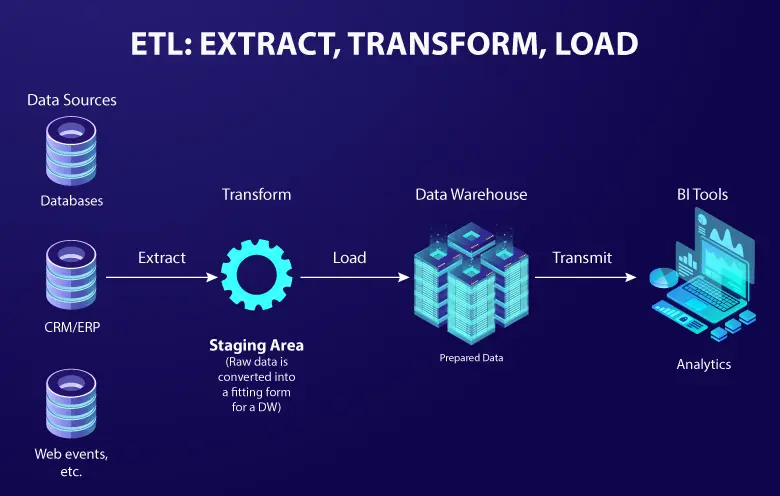The ability to extract meaningful information from data is no longer a luxury reserved for large corporations. Today, 59% of businesses, regardless of size or industry, are actively utilizing data analysis, says Forbes. This widespread adoption has led to a surge of innovation, transforming everything from advertising strategies to market planning.
A recent Deloitte survey underscores the impact of this shift. Nearly half (49%) of respondents credit data analysis with improving their decision-making, while 16% attribute it to strengthening key strategic initiatives. Additionally, 10% report improved relationships with customers and business partners directly resulting from data-driven insights.
However, to truly reap the benefits of data, simply collecting it isn’t enough. Ensuring its quality is crucial.
While data may be plentiful, its accuracy often leaves much to be desired. A Harvard Business Review study revealed a stark disconnect between perception and reality: only 3% of data quality scores in the study met the basic “acceptable” level.
In simpler terms:
- Data analysis is no longer just for big companies – it’s open to everyone!
- Businesses are using it to make better decisions, improve marketing, and even plan their strategies.
- However, poor data quality can limit its effectiveness.
By addressing data quality and implementing best practices in data analytics, businesses of all sizes can leverage the true power of data analysis and gain a significant edge over the competition.
1. Understanding industry standards: Charting the course for excellence
Building a robust data analytics practice begins with establishing a clear understanding of industry-specific benchmarks. These benchmarks serve as lighthouses, guiding organizations through the vast data ocean towards established standards of excellence. By benchmarking against recognized criteria, companies can:
Identify areas for improvement: Compare data quality metrics, data governance models, and analytical methodologies against industry leaders to pinpoint potential weaknesses and opportunities for growth.
Adopt best-in-class practices: Access standardized best practices and implement proven methodologies, accelerating their journey towards data-driven decision-making.
Stay informed of industry trends: Regularly monitoring industry benchmarks ensures awareness of evolving standards and regulations, enabling proactive adaptation and continuous improvement.
2. Driving quality through benchmarking: The pursuit of flawless data
Data, like any valuable resource, requires meticulous stewardship. Benchmarking becomes the driving force behind a culture of continuous improvement in data quality. Key performance indicators (KPIs) for data completeness, accuracy, and timeliness act as quality guardians, ensuring:
Complete data: Regularly compare data completeness metrics against industry standards to identify and address missing data points, fostering comprehensive and reliable analysis.
Accurate data: Implement data validation and cleansing processes backed by industry best practices, ensuring the integrity and reliability of insights gleaned from your data.
Timely data: Benchmark response times and data refresh rates against industry leaders to optimize data pipelines and ensure insights are based on the most recent information.
3. Enhancing security measures: Fortressing your data sanctuary
In today’s digital landscape, where cyber threats lurk like hidden reefs, data security takes center stage. Robust data governance frameworks, stringent access control protocols, and robust encryption measures form the essential bulwarks safeguarding sensitive information. By prioritizing data security, organizations can:
Prevent breaches: Implement industry-standard security practices like data encryption, multi-factor authentication, and access control protocols to minimize vulnerabilities and prevent unauthorized access.
Build trust: Prioritizing data security demonstrates a commitment to responsible data usage, quality management, fostering trust with stakeholders and creating transparent data practices.
Comply with regulations: Adherence to industry regulations and data privacy laws ensures legal compliance and avoids costly penalties.
4. Ethical considerations in data analytics: navigating the moral compass
Responsible data usage goes beyond mere security. Upholding ethical principles throughout the data lifecycle is paramount. This encompasses transparency in data collection and usage, ensuring informed consent and respecting individual privacy rights. By embracing ethical practices, organizations can:
Gain a competitive edge: Ethical data usage fosters trust and builds stronger relationships with customers and partners, leading to increased loyalty and advocacy.
Avoid legal repercussions: Adherence to data privacy regulations like GDPR and CCPA protects organizations from legal complications and fines.
Cultivate a responsible culture: Embedding ethical principles within data practices fosters a culture of transparency and accountability, building trust and positive brand perception.
5. Achieving operational excellence: data-driven decisions, optimized processes
Data analytics serves as the strategic compass that guides informed decision-making, ultimately propelling organizations towards operational excellence. By leveraging insights gleaned from data analysis, companies can:
Optimize processes: Identify bottlenecks and inefficiencies in workflows by analyzing operational data, leading to process improvements and streamlined operations.
Allocate resources effectively: Data-driven insights reveal resource utilization patterns, enabling informed decisions about allocation and ensuring resources are directed towards areas of highest impact.
Improve customer experience: Analyze customer data to understand their needs and preferences, allowing for personalized experiences and fostering loyalty.
6. The continuous improvement cycle: embracing perpetual growth
The journey towards data analytics excellence is not a finite destination, but rather a continuous cycle of learning and refinement. Regularly assessing performance based on established metrics, incorporating feedback from stakeholders, and actively seeking new knowledge are the driving forces behind sustained improvement. By embracing this cyclical approach, organizations ensure their data analytics practices remain dynamic and adaptive, evolving alongside the ever-changing business landscape.
For any business that wants to stay ahead of the curve, the ability to extract valuable insights is imperative. To achieve this, Softweb Solutions can help you to:
Softweb Solutions empowers you to:
Gain clear, actionable insights: We leverage best-in-class analytics techniques to unveil hidden patterns and trends within your data, providing you with the knowledge to make informed decisions with confidence.
Optimize operations and drive efficiency: By analyzing your data, we identify areas for improvement and develop data-driven strategies that streamline processes and maximize resource allocation.
Gain a competitive edge: Our solutions equip you with the tools and insights needed to stay ahead of the curve and make informed strategic decisions that propel your business forward.
We go beyond simply crunching numbers; we translate raw data into actionable intelligence that fuels informed decision-making. Our team of data analytics experts work with you to understand your unique business objectives and develop a customized roadmap for success.


